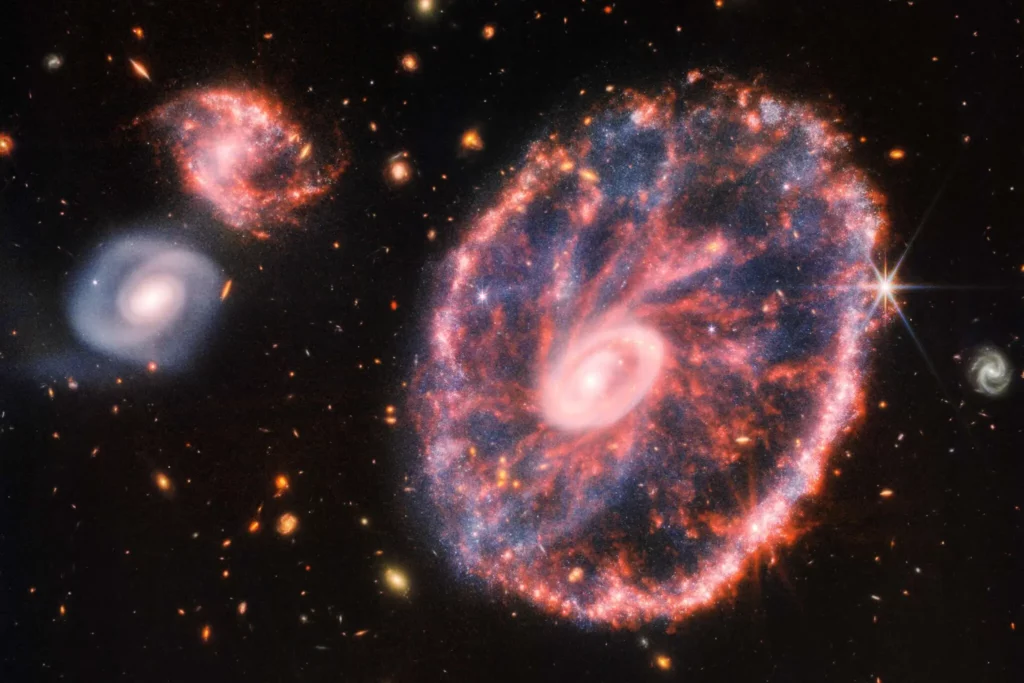The James Webb Space Telescope (JWST) released its first mesmerizing images earlier this month, but astronomers are actually sifting through a huge treasure trove of data that will keep them busy for years — and many of these observations are expected to be groundbreaking. JWST has already broken the record for the most distant galaxy twice, and it’s just getting started.

This week, astronomers showcased the magnificent Cartwheel galaxy, which is located about 500 million light-years from Earth. We’ve known about this galaxy for decades, but we’ve never seen it in such rich detail — and it’s easy to see how the galaxy got its name.
You can clearly see a star-rich, bright hub in the center of a tire-like ring of stars. There are even wavey arms extending from the central hub just like spokes. Additionally, JWST also snapped two smaller companion galaxies on the left-hand side.
Scientists think the gorgeous galaxy’s peculiar shape is owed to an ancient collision of two galaxies, which must have occurred hundreds of millions of years ago. The original shape of the Cartwheel likely started out looking similar to the Milky Way, a spiral galaxy, until another smaller galaxy moved through. Because the smaller galaxy crashed straight through the middle of the larger one like a bullet, the event was less disruptive to the shape of each galaxy, so both retained some of their individuality.

These unique circumstances resulted in the fascinating shape of the Cartwheel galaxy — a shape that has enthralled astronomers since they first observed it decades ago using ground telescopes like the Schmidt telescope in the UK and the Anglo-Australian telescope. Later, in the 1990s, Hubble Space Telescope snapped its own detailed picture of the Cartwheel galaxy in visible light. However, JWST’s infrared camera can see many more stars because it can literally peer through clouds of dust and gas. The images were later color-corrected so the stars and dust clouds look clearer and better to the human eye.
The Cartwheel galaxy is still expanding, adding new stars being constantly added inside its outer ring and around its edge. The galaxy is already one and a half times larger than the Milky Way and scientists don’t know yet how long it will keep expanding. As for the smaller galaxy that caused this cosmic disruption hundreds of millions of years ago, astronomers say it’s long gone out of the picture.









